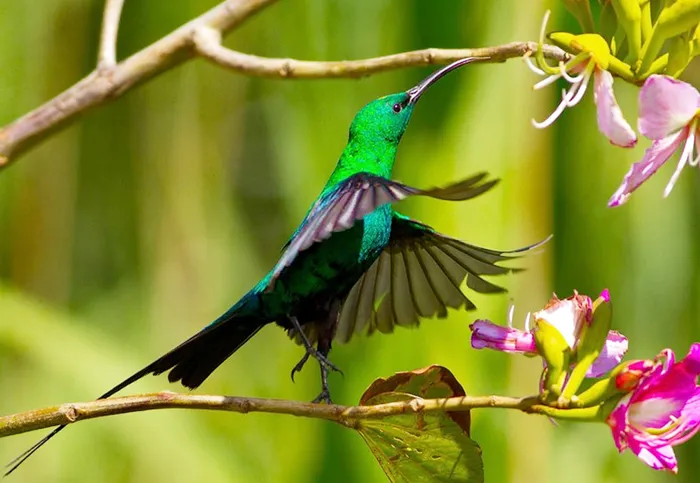Study explores effect of heat on birds

malachite sundbird. pic Louis Groenewald malachite sundbird. pic Louis Groenewald
Environment Writer
BIRDS are feeling the heat from climate change – but a UCT study has found it is more than just rising temperature that is causing the decline in some Western Cape species.
A study by researchers from UCT’s Percy Fitzpatrick Institute and the Centre for African Conservation Ecology at Nelson Mandela Metropolitan University said there could be reasons other than lack of heat tolerance to explain why man-made climate change is taking its toll on birds.
The study is set to be published next month in the Oxford University Journal of Conservation Physiology.
“We know climate change is linked to changes in species’ numbers and distribution, but we don’t always know exactly how or why. We need to figure out the factors actually driving declines before we can develop proper conservation measures to halt them,” said lead author Susie Cunningham from UCT, in a statement.
The researchers looked at 12 birds that live in fynbos, and compared data on the distribution of these birds from two surveys done 15 years apart, for the Southern African Bird Atlas. They matched this with climate data for the period, as well as physiological data.
They found that the range of all 12 of the fynbos bird species had declined over the 15 years. Eight of the 12 showed either a decline in reporting rates on their occurrence, or local extinctions in more than half their habitat range.
Endemic birds that favoured cooler habitats appeared to be more vulnerable to climate change than non-endemic species. Regarding temperature changes, the highest rates of climate warming were found inland in mountainous areas, while some coastal areas had cooled.
A key aspect of the study was to compare the data on climate and bird populations with the heat tolerance of each species. This helped the researchers assess the extent to which birds could cope with warming, and whether this was the primary indicator of changes in bird numbers.
The researchers subjected birds to a range of temperature tests. However, they said the considerable variation between their birds’ response and the rate of species’ decline prevented them from confirming a direct link between how the birds were doing under rising temperatures with their thermal physiology.
But despite this, the study showed a “striking similarity” between the birds’ decline and increases in temperature. This was most noticeable with the Cape rockjumper and the protea seed-eater, which live in cooler rangelands. Reporting rates for the Cape rockjumper had declined by 31 percent and for the seed-eater by 32 percent in the study area.
The Cape rockjumper was the only species whose decline was directly linked to a low tolerance of heat. Cunningham said there was an urgent need for “conservation intervention” for the rockjumper.